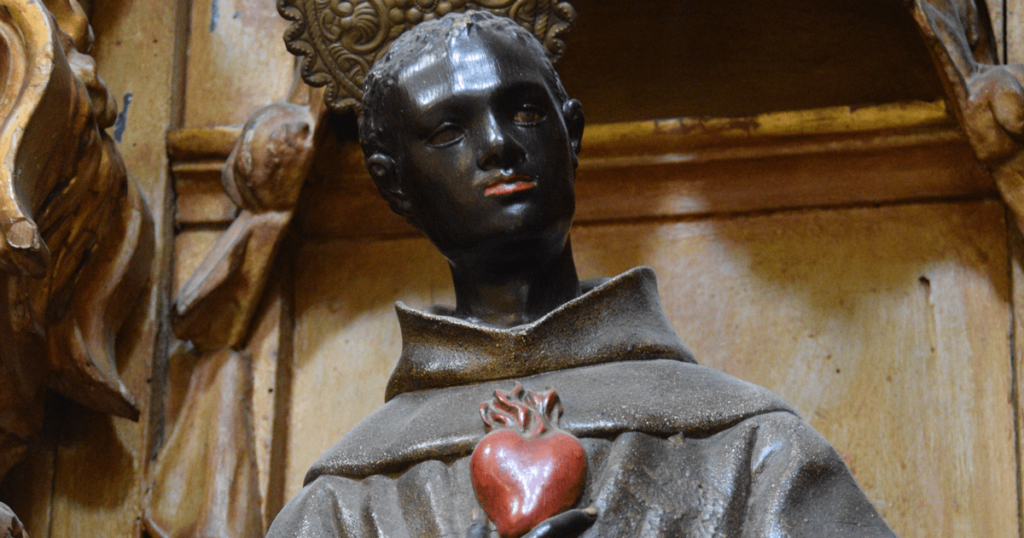
In the village of Aradas, on the north-central coast of Portugal, a 400-year-old church houses statues dating to the 17th century. The figures look almost lifelike, so uncannily realistic is the depiction of skin tones: you can see rosy cheeks and lips, highlights and shadows around the eyes, even stubble on the chins of men. Yet the statue of Saint Benedict of Palermo is different. Instead of exhibiting subtle flesh tones, his body—hair, face, hands, feet—is painted a single tone of black.
In baroque art, says Erin Rowe, an associate professor of history at Johns Hopkins University, the “blackness” of black saints “was the central feature of their sanctity that the painters wanted to elevate.” Rowe is writing a book on the spread of devotion to black saints during the early modern era, focusing on the Iberian world (both the peninsula and the American colonies) and on four saints in particular: Benedict of Palermo, Ifigenia, Elesban, and Antonio de Noto.
Two significant historical factors influenced how these saints came to be venerated: the global slave trade and the efforts of the Catholic Church to bring Africans, both slaves and freemen, into its fold. Baptized Africans formed “lay confraternities,” which chose patron saints to be celebrated on feast days and in the processions of Holy Week. These organizations propelled a vibrant grassroots devotion to black saints—leading, among other things, to the beatification of Benedict in the 18th century. Meanwhile, as European clergymen used the example of black saints to attract African members, they found themselves looking for spiritual meaning in the challenges black people faced. “There was a discourse about black, especially enslaved, people,” Rowe says, “as having a particular access to the divine because they were so poorly off already: ‘The last shall be first, and the first last.’ ” The clergy condoned slavery, but some of its members argued that slaves would be able to skip Purgatory, given their intense suffering on earth.
Rowe’s research is just beginning. “I found dozens of images of black saints in Spain and Portugal in small villages off the beaten track,” she says. “They haven’t been studied at all, and have barely been recognized as existing.”

